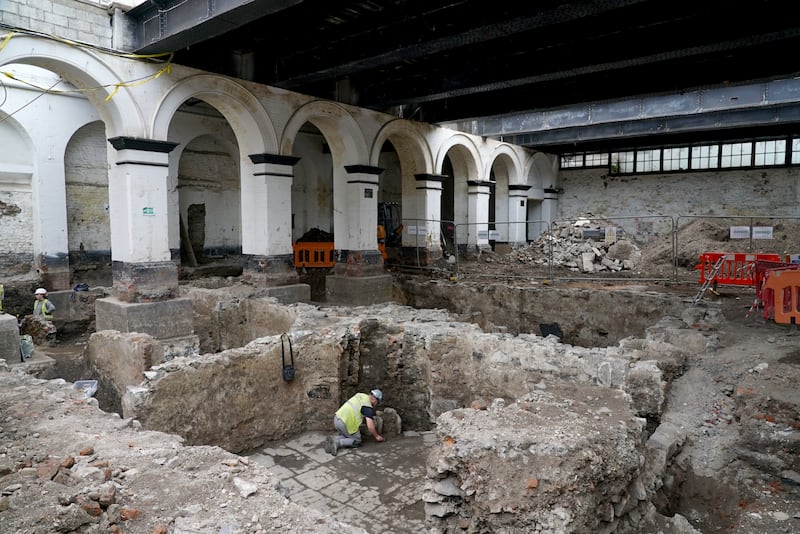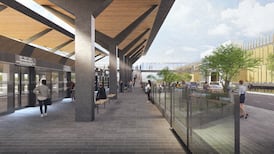More than 100 skeletons, some over 1,000 years old, have been discovered at a site off Capel Street in Dublin city centre during archaeological excavations for a hotel development.
The find, made by archaeologists working on the site of the Bullitt Hotel, which is to be built between Abbey Street and Mary’s Lane, indicates the existence of a Christian church predating the foundation of St Mary’s Abbey, previously thought to be the earliest post-Viking settlement in this part of the city.
The hotel, for which Northern Ireland hotel group Beannchor secured permission two years ago, is being built within what was the Victorian Boland’s bakery and biscuit factory, much of the fabric of which still remains.

However, the site contains the remnants of much older ecclesiastical buildings associated with the monastery founded in the 12th century as well as substantial parts of a Presbyterian meeting house from the 17th and 18th centuries, and foundations and cellars of a “Dutch Billy” merchant’s house dating from about 1700.
READ MORE
The site was part of the lands of St Mary’s Abbey, founded in 1139 by French Benedictine monks, and so archaeologists working on the site had expected to find burials from this period.

However, excavations have uncovered a number of skeletons which appeared to predate the foundation of the monastery, according Edmond O’Donovan, director of excavations for Courtney Deery Heritage Consultancy.
“Most of the skeletons are medieval, dating between 1200 and 1540, but there are definitely two that are 1,000 years old. One of them is dated by their association with a kite-shaped stick pin, very datable to the 11th century, and probably a shroud pin. Those two burials are significant because they predate the foundation of the abbey,” he said.
The manner of the burials indicate they were Christian, Mr O’Donovan added. “The burials show that when the abbey was established it came to an existing church site; we have no previous historical reference for that. That tells us a little bit about the relationship between the late Viking population and Christianity – we see a Viking-age Dublin that is becoming Christian before the coming of the Anglo-Normans.”
The skeletons, which have been removed from the site, will be examined by an osteologist for further research and transferred to the custody of the National Museum to become part of the national collection.

St Mary’s Abbey was Ireland’s largest and wealthiest medieval abbey, but was demolished after the dissolution of the monasteries in 1539. However, its stones were used in the construction of the Presbyterian meeting house built on the site in the 17th century and substantially rebuilt in the 18th century.
The meeting house was in turn incorporated into Boland’s bakery from 1882. Spared from previous development largely due to their backlot location, the bakery buildings remain some of the best-preserved early industrial buildings in the city. Ovens are still visible in the bakehouse and these and other structures associated with the bakery will be incorporated into the new hotel.
The planned 98-bedroom hotel, which is to be eight storeys tall, was granted permission in June 2021, almost three years after Beannchor first sought to redevelop the site. Mr O’Donovan said the development would bring the historical significance of the site to wider attention.
“Dubliners know about Abbey Street and Mary Street, but they wouldn’t necessarily associate it with the medieval abbey. This development will allow the story of what was the Christ Church of the northside to re-emerge.”








